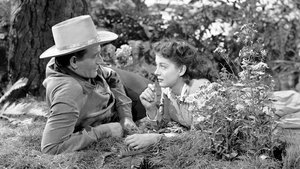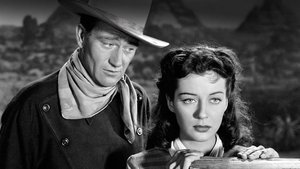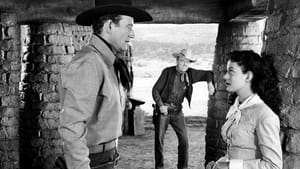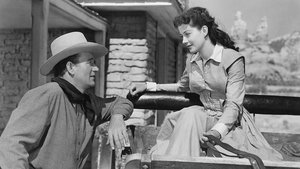Contact: [email protected]
Video Sources 0 Views
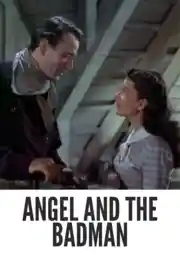
Synopsis
[ez-toc]




Introduction
In the ever-evolving landscape of cinema, the preservation and rejuvenation of old films stand as a testament to the industry’s commitment to its rich history. One such gem that has recently undergone a colorful transformation is the classic Western, “Angel and the Badman Colorized” (1947). In this article, we delve into the newly colorized version of this John Wayne starrer, exploring its making, the performances of its stellar cast, critical reception, and its enduring legacy. Let’s ride into the sunset of Hollywood’s past and witness the vibrant hues that breathe new life into an old masterpiece.
Read Media File Transfer Agreement: Terms and Conditions
Read FAQ
The Making of a Western Masterpiece
“Angel and the Badman Colorized” was crafted by the creative genius of writer-director James Edward Grant, who envisioned a Western that transcended the traditional narratives of the time. John Wayne, the legendary actor, took on a dual role as the producer and lead actor, contributing to the film’s unique vision and execution. Wayne’s influence went beyond the screen, shaping the very essence of the project.
Gail Russell, portraying the Quaker girl whose love story intertwines with Wayne’s character, Quirt Evans, delivers a compelling performance that adds depth to the film. Russell’s portrayal captures the innocence and strength of her character, providing a perfect foil to Wayne’s rugged gunslinger.
Behind the Scenes: Filming Process and Departure from Convention
The making of “Angel and the Badman Colorized” wasn’t without its challenges. Behind the scenes, tales of perseverance and innovation unfolded, contributing to the film’s timeless appeal. As a departure from conventional Westerns, the movie introduced innovative elements, both in terms of narrative approach and thematic depth. It dared to explore love, faith, and personal transformation against the rugged backdrop of the Old West.
The film’s departure from convention extended to its visual style and storytelling techniques. Grant’s directorial choices challenged the norms of the genre, setting “Angel and the Badman Colorized” apart from its peers. The film’s enduring charm lies not only in its narrative but also in its willingness to break free from the shackles of cinematic predictability.
The Colorful Transformation of Angel and the Badman Colorized
As the opening credits roll in the newly colorized version of “Angel and the Badman Colorized,” audiences are treated to a vibrant spectacle, breathing life into the iconic black-and-white frames. The plot follows the journey of Quirt Evans, a gunslinger whose encounter with a Quaker family sets him on a path of redemption.
The colorized version accentuates the beauty of the landscape, the intricacies of the costumes, and the emotions etched on the characters’ faces. The hues of the Western sunset and the vibrant clothing of the Quaker community add a layer of visual richness that enhances the overall viewing experience.
Quirt Evans’ transformation from a hardened gunslinger to a man grappling with the Quaker philosophy is a central theme explored in the film. The colorization process brings out the subtleties of this transformation, making the internal struggles and conflicts more palpable to the audience.
Bringing Characters to Life: Cast Performance in Vibrant Hues
Harry Carey and Bruce Cabot, along with the rest of the cast, contribute significantly to the film’s overall quality. Carey’s portrayal of the stern but wise Quaker patriarch adds gravitas to the narrative, while Cabot’s performance complements Wayne’s lead role, creating a harmonious ensemble.
The colorization enhances the nuances of each actor’s performance, allowing the audience to appreciate the subtle expressions and emotions that might have been overshadowed in the original black-and-white version. The chemistry between the cast members is more vivid, and the interplay of emotions takes center stage in this vibrant rendition.
Critical Reception and Enduring Legacy
Upon its initial release in 1947, “Angel and the Badman Colorized” received mixed reviews from critics. The film’s departure from traditional Western tropes was both praised for its innovation and criticized for deviating from established norms. Fast forward to the present, the colorized version has sparked new discussions about the film’s legacy.
Some purists argue that colorization alters the intended artistic vision of the filmmakers, while others contend that it breathes new life into old classics, making them more accessible to contemporary audiences. The enduring legacy of “Angel and the Badman Colorized” lies in its ability to provoke thought and spark debates, proving that even decades later, it remains a relevant piece of cinematic history.
The Art of Colorizing Classic Movies
Colorization, as a film restoration technique, has both its benefits and controversies. The process involves digitally adding color to black-and-white films, aiming to revitalize and preserve these cinematic treasures. For “Angel and the Badman Colorized,” the colorization enhances the visual appeal without compromising the essence of the narrative.
The benefits of colorization include introducing classic films to new generations who may find black-and-white movies less appealing. It also allows audiences to experience the intended visual richness envisioned by filmmakers. However, the controversy arises from the potential alteration of the original artistic vision, with some arguing that it dilutes the authenticity of the film.
While purists may resist the idea of colorization, it’s essential to acknowledge the artistic enhancements it brings to old movies. The delicate balance between preserving the authenticity of the original and introducing modern elements is an ongoing debate within the film preservation community.
From Classic to Modern: A Remake Journey
The journey of “Angel and the Badman Colorized” doesn’t end with its colorization; it extends into the realm of remakes. In the ever-evolving film industry, remakes have become a common phenomenon, with filmmakers revisiting classics to bring them to a new audience.
While there have been talks of remaking “Angel and the Badman Colorized” for modern audiences, the attempts have been met with mixed success. The challenge lies in capturing the essence of the original while adapting it to the sensibilities of contemporary viewers. This journey from classic to modern highlights the timeless appeal of the story, which continues to inspire filmmakers across generations.
Embracing the Colors of Cinema History
As we embark on this journey through the vibrant hues of “Angel and the Badman Colorized 1947,” it’s crucial to appreciate film heritage in all its forms. While the black-and-white version remains a classic, the colorized rendition adds a layer of visual richness that complements the timeless narrative. Enthusiasts of classic movies should embrace both versions, recognizing the value each brings to the cinematic legacy.
Beyond “Angel and the Badman Colorized,” there is a treasure trove of old films waiting to be explored. From timeless comedies to gripping dramas, the era of black-and-white cinema offers a diverse range of storytelling. Embracing the colors of cinema history involves celebrating the artistry of storytelling in its various forms, from the silent era to the golden age of Hollywood.
Conclusion
In conclusion, “Angel and the Badman Colorized 1947” stands as a testament to the enduring magic of classic cinema. The colorization process breathes new life into this Western masterpiece, offering audiences a fresh perspective on the timeless story of Quirt Evans and his journey of redemption. As we navigate the ongoing debate surrounding the colorization of old movies, it’s essential to appreciate these films in their various versions, acknowledging the significance of both black-and-white originals and their vibrant, colorized counterparts. So, whether you choose to experience the rugged landscapes of the Old West in classic monochrome or the vivid hues of a newly restored masterpiece, the allure of “Angel and the Badman” remains timeless, captivating audiences across generations.
